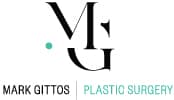Deep Plane Facelift Surgery in Auckland New Zealand by Dr Mark Gittos Plastic Surgeon
A facelift, also called a rhytidectomy, is a popular rejuvenating plastic surgery procedure that acts to tighten the area around the jaw and chin, reduce the appearance of wrinkles, and improve skin elasticity in the lower face and neck. This procedure is very popular for ageing patients who wish to create a more youthful appearance of the face, and minimise the physical signs of ageing. The appearance of premature ageing – which can be caused by UV damage – can be drastically improved by a deep plane facelift. A “deep plane” facelift is an advanced rhytidectomy technique performed by New Zealand Plastic Surgeon Dr Mark Gittos to create longer-lasting, natural results.
Download Dr Mark Gittos’ Guide to Facial Rejuvenation Surgery – Surgical and Non Surgical Anti-Aging

What is a Deep Plane Facelift?
During a deep plane facelift, the tissue in the face and neck is expertly repositioned, released and remodelled. This technique helps to create the appearance of a more youthful, sculpted face and neck.
The results of a deep plane facelift have been shown to last significantly longer than the results of a standard facelift, and many patients report that a deep plane facelift results in a more natural-looking end result. Reducing the physical signs of ageing can help to boost self-esteem, improve self-image, and increase confidence. With a deep plane facelift, many patients receive feedback that they look 5-10 years younger!
How is a Deep Plane Facelift Different from a Traditional Facelift?
During a standard facelift, the skin and some of the muscles of the lower face and jowl are surgically lifted upwards. The muscles along the lower face and jowl are called the “Superficial Musculo-Aponeurotic System”, or the SMAS. When the SMAS and another muscle of the neck, called the platysma, are lifted, the skin is separately slightly from the muscles underneath.
A facelift that elevates the SMAS creates a firmer, more lifted appearance of the face, but can also create a “tight” appearance of the cheeks and jaw. Many patients prefer to avoid this initial “tight” appearance of the face, which can be a giveaway to others that a facelift procedure has been performed. Traditional facelift surgery also results in more visible scarring than a deep plane facelift, and results are not as long-lasting.
During a deep plane facelift, Dr Gittos surgically repositions some of the tissues below the muscles of the lower face, without separating the facial skin from the underlying muscles. He expertly releases some of the ligaments that attach to the deep layers of the facial muscle, allowing the face to be “lifted” without appearing tight or creating tension on the sutures. Through releasing deep facial ligaments, a more voluminous appearance of the face is created without the use of filler, implants, or fat grafting. Releasing these ligaments creates a natural “lifting” effect of the cheeks, jowls, and neck.
Am I a Good Candidate for a Deep Plane Facelift?
A deep plane facelift is a popular plastic surgery solution for both men and women who are unhappy with visible signs of ageing on the face and neck, and wish to have a more youthful appearance of the face, jaw, and jowls. Whether you will be a good candidate for a deep plane facelift procedure depends on what aesthetic concerns you wish to address with plastic surgery, as well as a range of personal factors.
Common cosmetic concerns that can be surgically addressed by a deep plane facelift include:
- Premature wrinkling of the facial skin
- Decreased elasticity or firmness of the skin of the face and jowls
- A sagging, less youthful appearance of the lower face
- Increased appearance of the nasolabial folds
- Reduced volume of the cheeks
- Drooping cheeks or a “hollowed” appearance of the mid-face
If you have any of these cosmetic concerns, you may be a good candidate for a deep plane facelift if:
- You are in generally good health
- You prefer the results of a deep plane facelift over those of a traditional facelift, or other facial surgery such as a mini facelift or neck lift
- You are a non-smoker, or are willing to quit smoking at least three months before having your procedure
- You have a BMI of 30 or below. To check your BMI, use the Heart Foundation NZ BMI calculation tool.
- Your expectations surrounding a deep plane facelift procedure are realistic, and you have researched the potential risks of having this procedure
Benefits of a Deep Plane Facelift

To boost self-esteem, reduce the visible signs of ageing, and create a more youthful and lifted appearance of the face, a deep plane facelift can help to:
- Restore a smooth, firm appearance to the skin of the face
- Create a more defined appearance of the jawline
- Reduce the appearance of excess skin around the jaw
- Decrease the appearance of lines around the lips, jowls, and lower face
- Tighten the deep muscles of the face
- Increase the volume of the lower and mid-face area
Compared to a standard facelift, a deep plane facelift has the additional benefits of:
- Avoiding an unnatural or visibly “tight” appearance of the face after your procedure
- Minimal tugging at the eyes, ears, or cheeks
- Avoiding a stretched appearance of the corners of the eyes and mouth
- Long-lasting surgical results
- Reduced flatness of the cheeks following surgery
- Minimal disruption of blood vessels
- Minimal appearance of scarring
Recovery after Having a Deep Plane Facelift
As a deep plane facelift is a more invasive plastic surgery procedure than a standard facelift, you can expect to experience a longer recovery time post-op. The areas around the face and neck can be sensitive, so it is normal to experience some discomfort during this time. Dr Gittos will ensure that you are fully informed about what the recovery process may look and feel like for you.
During the first three weeks following your deep plane facelift procedure, you are likely to experience symptoms such as:
- Bruising of the lower face and neck
- Discomfort of the surgical site
- A feeling of numbness in areas of the face
- Swelling of the lower face, jowls, and neck
During the weeks following your deep plane facelift procedure, you will need to wear a compression garment over the area, as well as a drain to reduce swelling and help to remove fluid that has accumulated in the neck area. Dr Gittos will advise you on how to wear these garments, and when they should be removed.
Painkillers can be prescribed to reduce discomfort in the sensitive areas around the face and neck, and this discomfort typically eases on its own in the weeks after the procedure. It is very important to get plenty of rest following a deep plane facelift to allow the body to heal and recover, as well as making sure to eat a balanced diet and drink plenty of water. Drinking alcohol and smoking should be avoided during surgical recovery, as these substances can slow down healing and increase the chances of surgical complications.
Because a deep plane facelift uses surgical techniques that are less disruptive to the blood vessels underneath the facial skin, swelling and bruising can actually be less noticeable after a deep plane facelift when compared to a standard facelift. As the blood supply is not disrupted, this can result in faster and more natural-looking healing following the procedure.
Returning to Work After a Deep Plane Facelift

The length of your recovery period following a deep plane facelift depends on a number of factors, which Dr Gittos will discuss with you during your consultation. The time taken to recover from a deep plane facelift can be very different depending on your health, your lifestyle, and the specifics of your surgical procedure. In general, Dr Gittos recommends that any strenuous activity is avoided for the first six weeks following your procedure.
If you are considering a deep plane facelift, it is natural to be concerned about how soon you will be able to return to work after your procedure. The amount of time that you will need to take off work depends on factors such as the nature of your job, your health and medical history, and the symptoms you are experiencing during your recovery process.
Even if you have a sedentary job, such as a desk job, which allows you to work from home, you will need to take a minimum of two weeks off work to recover from your procedure. If your job is very physical, involves a lot of time on your feet or the potential for heavy lifting, you will need to spend longer recovering before returning to work. If there are any complications during your recovery period, or you don’t feel ready to return to work, it is completely normal to need more time to let your body recover.
If you are concerned about symptoms that you may experience after your deep plane facelift procedure, or wondering when you will be able to return to work or exercise, Dr Gittos is happy to advise you or answer any questions you may have.
Results to be Expected After a Deep Plane Facelift
Deep plane facelift surgery gives a range of long-lasting results that lead to a more youthful appearance of the face and neck. Some of these results will be obvious immediately, but others will become more visible as your face and neck heal from your procedure.
After having a deep plane facelift, you can typically expect the following surgical results after the initial recovery period from surgery:
- Improved volume of the mid face and cheeks
- Increased definition of the jawline and chin
- Reduced appearance of jowls
- Reduced drooping or sagging of facial skin
- A more smooth, youthful appearance of the face
- Softened appearance of the nasolabial folds
- Minimal visibility of deep plane facelift scars
Because a deep plane facelift uses surgical techniques that avoid separating the skin, the incisions are able to heal without “tugging” or tension from sutures. This allows the incisions from a deep plane facelift to have a very minimal, subtle appearance – almost the same as the appearance of fine lines that naturally exist on the face. Many patients report that their scars from a deep plane facelift are not noticeable to others.
How Much Does a Deep Plane Facelift Cost in New Zealand?

Just like any plastic surgery procedure, the cost of a deep plane facelift in New Zealand can vary significantly based on a variety of personal and surgical factors. Typically, the cost for a deep plane facelift in New Zealand will begin at around $30,000, depending on factors that include:
- What region and hospital the surgery is performed in
- Which surgeon performs your procedure
- The complexity and length of the procedure
- If you are combining your deep plane facelift with another procedure, such as a chin augmentation or eyelid lift
- The costs for anaesthesia and theatre fees
- Costs for compression garments
- Care during the recovery period after surgery
It’s important to consider these factors, especially the experience, qualifications and expertise of your surgeon, when planning your deep plane facelift procedure. Cheaper is not always better, and a high-quality procedure by an experienced surgeon such as Dr Gittos will provide longer-lasting, more natural results even though the price tag may be higher.
If you notice a deep plane facelift surgery being advertised for a significantly lower price, this might mean:
- The procedure is not being performed by a highly qualified Specialist Plastic Surgeon
- The surgeon does not have sufficient experience performing a deep plane facelift
- The quoted price is not inclusive of post-op care, compression garments, anaesthesia, or theatre fees
About Dr Mark Gittos FRACS (Plast) – New Zealand Plastic Surgeon
Practice locations in Herne Bay Auckland, Northland and Bay of Plenty – Kerikeri, Whangarei, New Plymouth & Tauranga
Dr Mark Gittos is a leading Specialist Plastic Surgeon and operates a practice in Herne Bay, Auckland and in the UK. The practice focuses on both surgical and non-surgical procedures, each designed to help restore, improve or change a physical characteristic or problem. The first step in every case is to talk through your personal requirements and explore all the options, before deciding on the most effective solution.
Dr Mark Gittos offers high quality, natural-looking cosmetic surgery results and is highly experienced in Breast, Body and Face Surgery having performed over 4000 Surgeries in the last 26 years. With worldwide expertise Dr Gittos is an expert in breast, face and body surgery for men & women.
Naturally, before any treatment is begun, we will explain clearly the advantages and risk factors; so that you have the information you need to make an informed decision that is best for you. Visit the practice to find out more.

NEXT STEPS
Please NOTE: Dr Gittos only performs surgery on non-smoker patients with a BMI less than 30. To check your BMI please visit the NZ Heart Foundation website. For help giving up smoking before surgery visit the Smoke Free website
Do your Research
- Read the Website and Blogs relevant to your procedure
- Browse our Frequently Asked Questions including how to choose a Surgeon for your procedure
- Download and read the FREE Guides to Surgery
What to Bring to your Plastic Surgeon Consultation
- Bring a friend or relative to help discuss the information and your choices
- Take lots of notes and read the documents provided thoroughly
- Dress in simple clothes as you may need to undress for examination
- Bring your medical referral and any relevant medical documents or test results
Book your Initial Surgery Consultation
- A Referral from your GP or specialist is helpful but NOT essential – you can have a consultation without a GP Referral
- Email us or Call on 09 529 5352 to arrange your surgeon consultation appointment.
- Book a consultation with Dr Gittos by paying the Consultation Fee – $350 incl GST
Traveling for Surgery? – Consider post-surgery luxury recovery in a Hotel with LuxeCare
Please contact us to arrange to book a consultation with our Specialist Plastic Surgeon or to speak with our Patient Care Advisor.
Send an enquiry form today or phone 09 529 5352 during Clinic Hours
